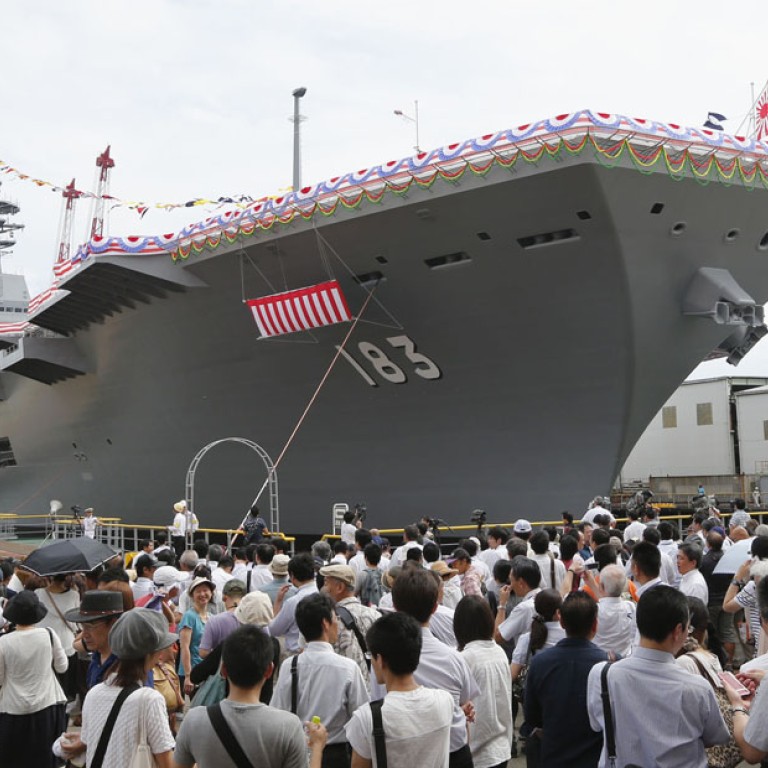
Ill-informed storm over Japan's aircraft carrier in disguise
Stefan Soesanto says talk of possible China-Japan war is unfounded
Last Tuesday, Deputy Prime Minister Taro Aso formally unveiled Japan's first Izumo-class helicopter destroyer - reported by global media as the country's biggest warship since the second world war.
While the newest addition to the Japanese navy is going into service no sooner than March 2015, the 248-metre-long and 19,500-tonne flat-top destroyer has already raised eyebrows across East Asia.
The Izumo's distinctive features certainly do not resemble anything one would typically classify as a destroyer. Indeed the warship currently under construction in Yokohama harbour is an aircraft carrier in anything but in name. Its size, tonnage and speed are closer to the US Essex aircraft carrier class, than to any of the two previous helicopter destroyers Japan has built so far.
At a cost of US$1.14 billion, the Izumo is officially conceptualised to host up to 14 helicopters whose missions would range from anti-submarine warfare and maritime border surveillance to humanitarian relief operations. In this regard, the Izumo's objectives are identical to the two Hyuga-class helicopter destroyers that were put into service in 2009 and 2011.
The current discussion among analysts and military brass as to whether Japan's helicopter destroyers are considered aircraft carriers is not new. According to , Maritime Self-Defence Force chief of staff Admiral Keiji Akahoshi stated in 2009 that the Hyuga-class falls outside the conventional definition of an aircraft carrier because it lacks a fair degree of offensive functions. This argumentation has been notably employed by the Japanese government to circumvent Article 9 of the peace constitution to portray its helicopter destroyers as purely defensive military assets.
While Beijing's criticism towards the Hyuga-class has been largely used as a means to support its own aircraft carrier expansion plans, the unveiling of the much larger Izumo has prompted widespread fears in China. Major Chinese media outlets went to great lengths to link Japan's militaristic past to plans by the Japanese government towards constitutional revision. Indeed, the Chinese defence ministry even put out a statement saying that it is "concerned over Japan's constant expansion of its military equipment".
Reflecting on its own aircraft carrier plans, however, Chinese experts such as Li Daguang, professor at the National Defence University of the People's Liberation Army, seem to make a simple leap of faith by suggesting that "the Chinese aircraft carrier Liaoning was mainly built for training purposes while the Izumo was built for real war".
Other overseas experts joined the chorus by speculating that the Izumo might make a natural transition towards a conventional aircraft carrier.
Western media was quick to paint a picture of a possible military conflict, by inferring that the Izumo-class will be used in the territorial dispute between China and Japan over the Senkaku/Diaoyu islets.
All in all, it is surely bending the facts to equate military modernisation with a regional arms race between the two major powers in East Asia.
Contrary to conventional wisdom, the confrontational stance on territorial claims between Japan and China is largely fought by their respective coastguards and not their militaries. As Christian Le Miere states in a recent article, "regional disputes are still focused on constabulary, not military, competition".
Indeed, military modernisation, whether on shore or at sea, has profoundly altered public perceptions across the historically charged region. But to suggest an arms race or even the possibility of war over some meagre islets and resources does little to enhance our understanding of the unfolding change in East Asia.
